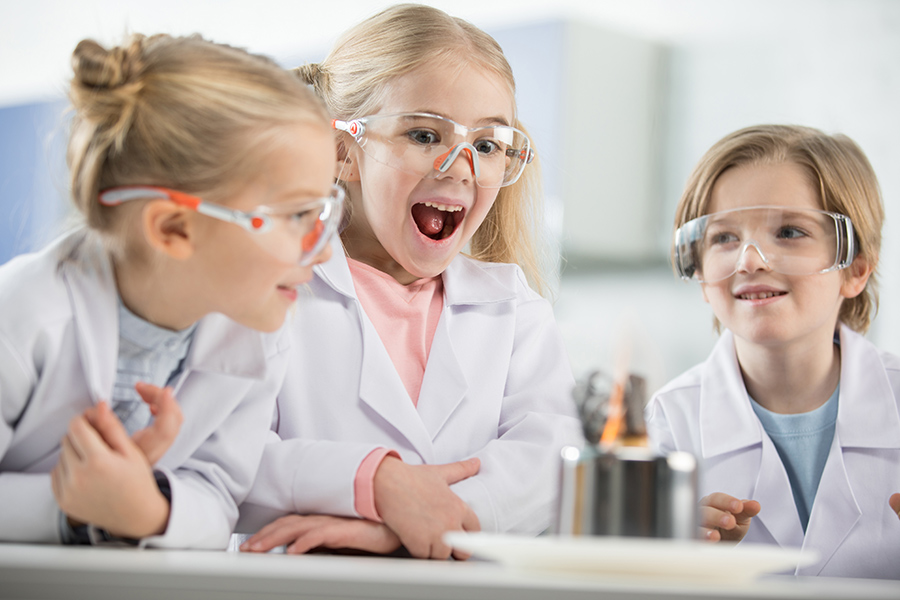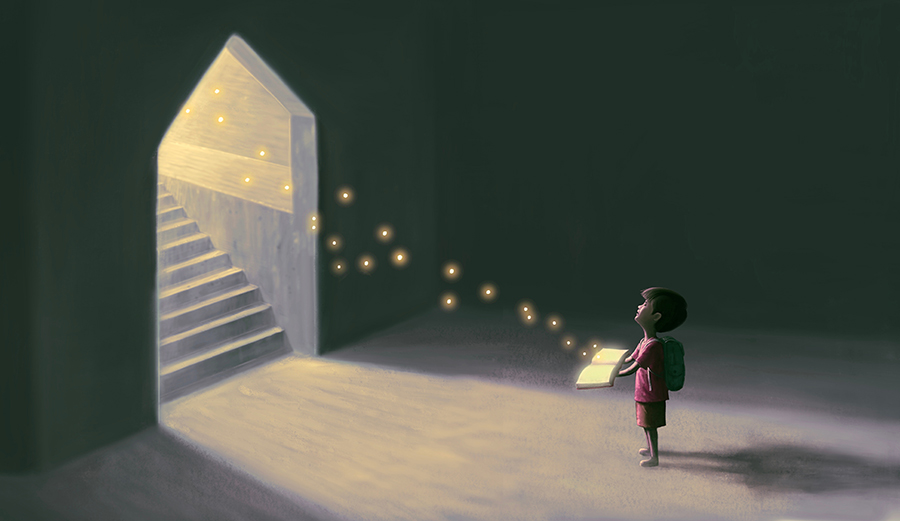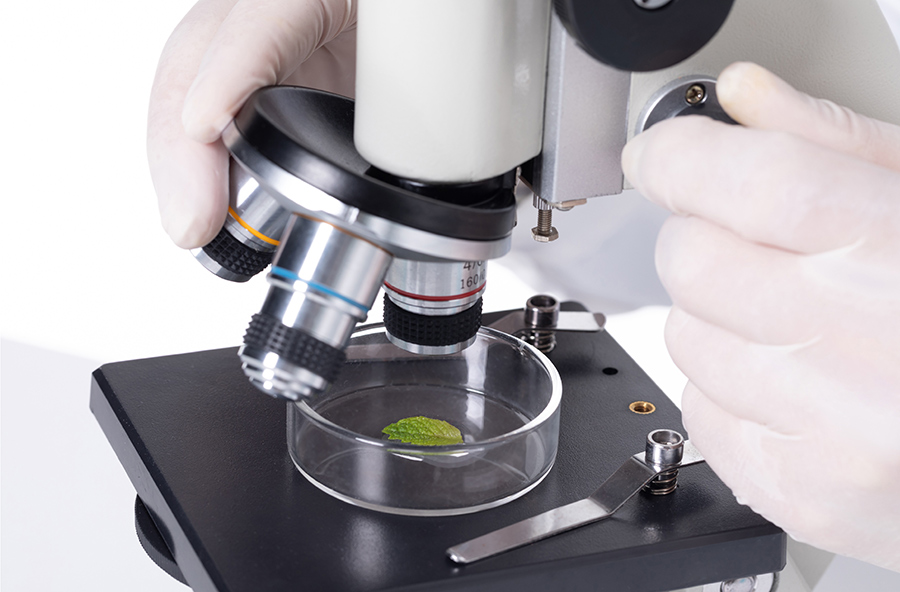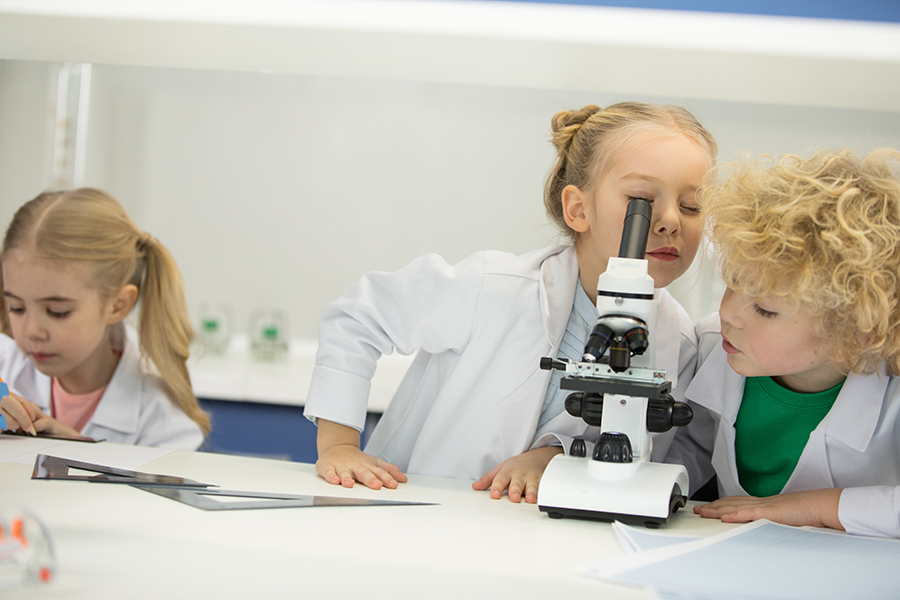Sweden’s preschool curriculum promotes scientific literacy of young children, with a focus on natural sciences. But how can preschool children best gain an understanding of physical phenomena and basic chemical processes? Dr Clara Vidal Carulla (Gothenburg University) and Dr Karina Adbo (Linnaeus University) use cultural-historical theory to explore how abstract thinking can be developed in preschool children to support science education. The focus of their research is on sub-microscopic particles in chemistry, but the findings are useful for learners of all levels.
Chemists perceive the world as composed of particles of various sizes, which are in continuous motion and take part in processes of arrangement and rearrangement, most of which are on a sub-microscopic, invisible level. This perspective requires people to be capable of imagining a world that is beyond their everyday sensory experience. Decades of educational research shows that this is difficult for learners of all ages, but especially in early years education.
Dr Clara Vidal Carulla from Gothenburg University and Associate Professor Karina Adbo from Linnaeus University undertook a longitudinal study and have written several papers which explore and facilitate early chemistry educational development. They situated their study within the cultural-historical theory and believe that meaningful understanding by young children about the concepts of chemistry is dependent on how well teachers can develop appropriate activities and understand how children interpret these. Their research explores the emergent understanding of abstract concepts in chemistry through imaginative play-based learning and sustained shared thinking.

Cultural-historical theory
The team’s research is underpinned by cultural-historical theory (CHT), which indicates that human development is a complex dialectical process. This means that a person’s development is generated through dialogue and discussion between two people or more. CHT therefore highlights the whole of a child’s social encounters and their interpretation of these as having an impact on their development. A child’s development is in relationship, or dialectic, with their social world. The theory stands in opposition to monistic (human development occurs in an individualistic, purely biological manner) or dualistic (body and mind) approaches to human development.
Contemporary CHT has become a comprehensive theory of development that is inclusive, embracing both the personal and the social aspects of learning and development. It defines learning as any change in relations that provide possibilities for new activities and the internalisation of social interactions. While this is a generally applicable process, it does not occur in the same manner for all learners.
“Contemporary educational theory recognises abstract thought as building on everyday sensory experiences which can occur in a child’s early years through developing imagination.”
CHT recognises learning as an emotionally sensitive, dynamic, and individual process. This is due to its acceptance that each person has different ways of viewing and interpreting the world. Each person has their own ‘prism’ or way of interacting with, paying attention to, and interpretating their social world, identified by some as their unique lifeworld experiences. Within the world of education, learning is dialectical: each person develops new ways of understanding and behaving through interaction with their social world, particularly their teachers and peers.

Sustained shared thinking
The term sustained shared thinking is used in situations where the teacher and children work together, expanding each child’s everyday experiences. Dr Clara Vidal Carulla and Dr Karina Adbo pointed to several areas of importance for sustained shared thinking in early childhood chemistry education. They state the quality of the teacher-child interaction when working together is crucial. Alongside this, the teacher and all the children need to contribute to the discussions by voicing their thoughts and reflections. This should involve them being engaged in open-ended questions. As part of this, the teacher needs to provide the children with formative feedback as well as modelling desired behaviour.
Sustained shared thinking fits in with the dialectic of CHT and play-based educational pedagogy developed from Vygotsky’s scaffolding theory. The teacher has a key role in sustaining the discussions and actively participating in them. At the same time, the teacher encourages the children to adopt a positive inquiring attitude and the use of scientific terms through their role modelling and feedback.
Play-based learning and emergent science education
CHT highlights the social perspective of learning science driven by exploration of scientific phenomena and positive engagement. Within this context, children’s emerging knowledge is a continuous and ongoing process where it is anticipated children will express interests in science. Here, the term children’s emergent knowledge or, more specifically, ‘emergent chemistry’ is used to refer to children’s expressions of interest and understanding of the phenomena, in this case, chemistry.

Within this pedagogy, based on the scaffolding theory of Vygotsky further developed by educational researchers, an important aspect of learning in play-based settings is imagination. This is believed to facilitate the development of abstract thought. Abstract thinking enables the generalisation of experiences across different contexts – for example, atoms can be found in leaves and in water. The scaffolding theory has affective and cognitive domains, both of which are seen as necessary for helping children move from inter-personal to intra-personal functioning: internalising and making sense of knowledge from teacher and peer conversations; shared thinking.
Swiss psychologist Jean Piaget believed abstract thought to be unobtainable until the age of eleven years or older. He also recognised its importance in the facilitation of scientific and mathematical understanding. Contemporary educational theory, however, recognises abstract thought as building on concrete thoughts, such as everyday sensory experiences which can occur in a child’s early years through developing imagination.
Hands-on experience of chemical phenomena
The studies conducted by Dr Vidal Carulla and Dr Adbo explore children’s emerging ability to use abstract thought through imagination to develop understanding of chemistry concepts. To enable capture and analysis of the children’s activities and discussion, the researchers used visual ethnography. This allowed for researcher participation and detailed scrutiny of the interactions through strategic positioning of video cameras.

Play-based learning activities were designed and implemented to provide hands-on practical experience of chemical phenomena and to explore children’s reasoning regarding these phenomena. This facilitated exploration of children’s skill attainment and interpretations of science.
The play-based learning activities included deconstruction of everyday items and the use of magnifying glasses and microscopes. They were supported by the teacher who – through sustained shared thinking – led the children’s discussions and reflections about their interpretation of what they were experiencing. The children at this age had limited verbal language skills and so at times expressed their understanding in nonverbal ways, for example demonstrating how a snowflake behaved. The activities included using a mortar, magnifying glass and microscope to view known objects such as leaves. These were further developed by inclusion of animated clips showing the transition from everyday size to ‘small’. Through sustained shared thinking, the teacher was able to address both cognitive and affective domains. This facilitated the elicitation of the children’s understanding of the transition from macroscopic to microscopic scale and their positive motivation.
The world of the microscopic
The results from the play-based activities did not provide enough support for the children to make the shift towards an imaginative world of the microscopic. At this stage they simply described the small particles as familiar items such as ice and dust. Some children even referred to the particles they saw under the magnifying glass as big.
“It is important that both cognitive and affective aspects of preschool science education are considered in order to create positive attitudes and motivations for science.”
It was not until Dr Vidal Carulla and Dr Adbo provided the children with computer animations zooming in from the macroscopic to the sub-microscopic level that the children were able to move beyond everyday descriptions. The children’s descriptions were then slowly transformed into recognition that things may not be exactly what they seem, a realisation that is important in abstract thinking. The visual experience of the actual transition process enabled the children to express their understanding of ‘small’ to encompass the sub-microscopic.

The CHT has been useful in the exploring children’s development of chemistry understanding and abstract thinking. Within this, both cognitive and affective domains need to be addressed through sustained shared thinking, scaffolding and the social environment which are all significant in the development of learning, but also positive motivation.
These results can be part of solving the decade-long issue of how learners of all educational levels can be supported to understand chemistry concepts.
Conclusions
There are many conclusions that can be drawn from this research project. Primarily, it demonstrated that chemistry does have a place in early years education. Chemical methods are accessible to young children who can develop abstract thinking when provided with appropriate visual aids and sustained shared thinking. It is important that both cognitive and affective aspects of preschool science education are considered in order to create positive attitudes and motivations for science.
The teaching or leading of science education for early years children requires skilful practitioners who can engage children in conversations that build knowledge and understanding through sustained shared thinking which emerge from the children’s everyday experiences. Teachers’ ability to develop and encourage these conversations and children’s peer discussions are an important part of a child’s educational development.
What inspired you to conduct this research?
Dr Vidal Carulla: I had been working as a preschool teacher myself for over a decade and experienced the frustration of struggling to fulfil the requirements of the curriculum. I got in contact with Dr Adbo and she offered me a PhD position in which we designed, implemented and assessed chemistry activities for a preschool setting with the aim of researching this new field. After this four-years project we have built a network with scholars from around the world focusing on early childhood science education and we are sharing this knowledge with the future preschool teachers in Sweden.
References
- Adbo, K. & Vidal Carulla, C. (2020). Learning About Science in Preschool: PlayBased Activities to Support Children’s Understanding of Chemistry Concepts. International Journal of Early Childhood, 52, 17–35. Available at: https://doi.org/10.1007/s13158-020-00259-3
- Adbo, K. & Vidal Carulla, C. (2019). Designing play-based learning chemistry activities in the preschool environment. Chemistry Education Research and Practice, 20, 542. Available at: https://doi.org/10.1039/C8RP00306H
- Vidal Carulla, C. & Adbo, K. (2020). A study of preschool children’s motive orientation during science activities. Review of Science, Mathematics and ICT Education, 14(1), 47–67. Available at: https://doi.org/10.26220/rev.3346
- Vidal Carulla, C. & Adbo, K. (2019). Using Cultural-Historical Theory to Design and Assess a Chemistry Play-Based Learning Intervention. Cultural-Historical Psychology, 15(4), 35–43. Available at: http://dx.doi.org/10.17759/chp.2019150404
10.26904/RF-137-1587820710
Research Objectives
Drs Clara Vidal Carulla and Karina Adbo explore children’s emerging understanding of abstract thinking in chemistry.
Funding
- Crafoord Foundation
- Längmanska Kulturfonden
Collaborators
The researchers are very grateful for the staff, children and families from the preschools that took part in the study.
Bio

Dr Clara Vidal Carulla gained her PhD at the Faculty of Health and Life Sciences, Linnaeus University. Since August 2021 she works at Gothenburg University. Her research focuses on the emergence of science in the preschool setting.

Dr Karina Adbo works as Associate Professor at Linnaeus University, Sweden, with a research focus on the development of abstract models for all educational levels from preschool to university level.
Contact
Address
Norra Kajplan 6
39247 Kalmar
Sweden

Dr Clara Vidal Carulla
E: clara.vidalcarulla@lnu.se
T: +46 763281767
W: https://orcid.org/0000-0002-0211-9457
Dr Karina Adbo
T: +46 738248569
W: https://orcid.org/0000-0001-8819-0977









